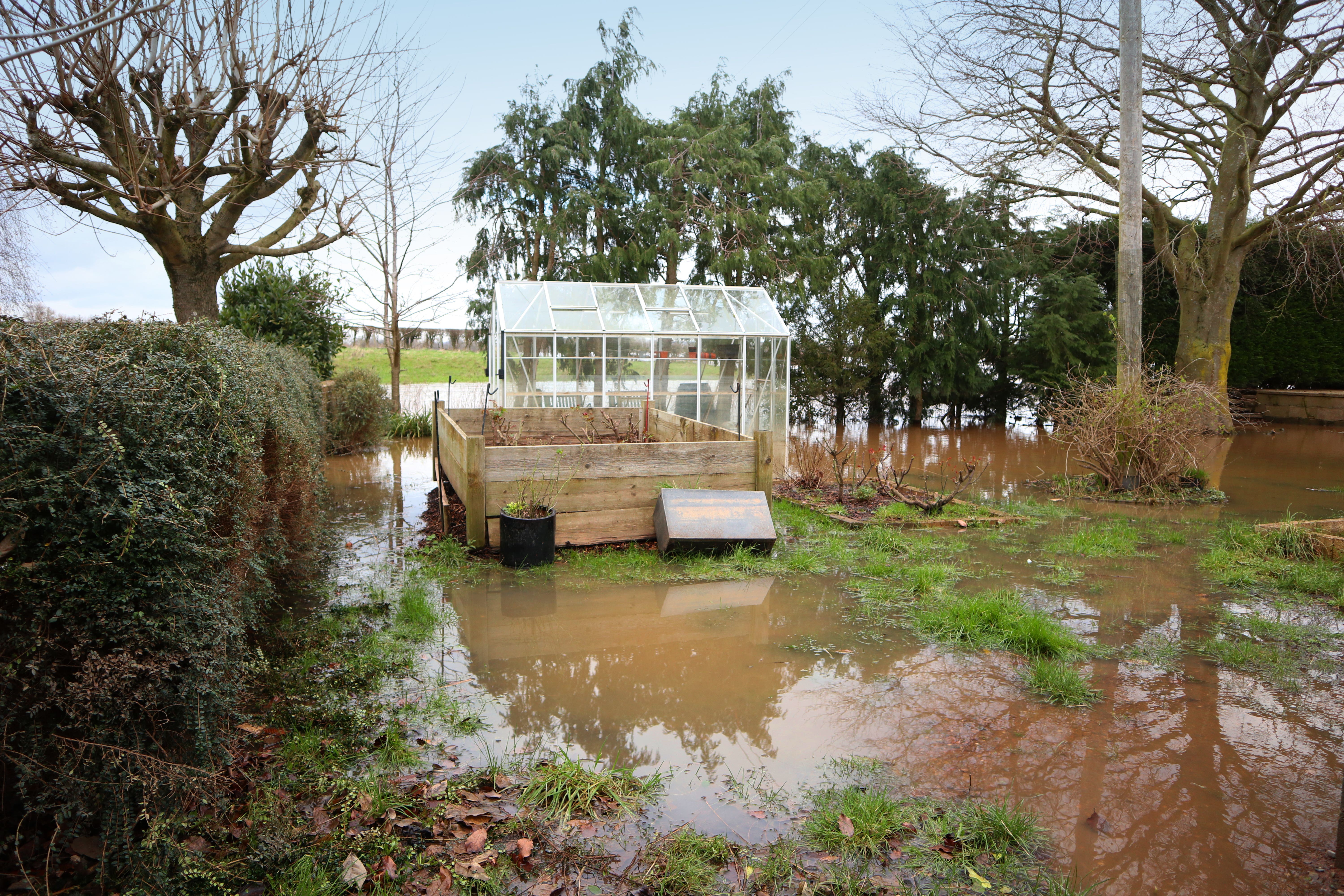Flooded gardens: What can you do to future-proof them?
RHS Chelsea Flower Show designers offer tips on alleviating garden flooding.

Your support helps us to tell the story
From reproductive rights to climate change to Big Tech, The Independent is on the ground when the story is developing. Whether it's investigating the financials of Elon Musk's pro-Trump PAC or producing our latest documentary, 'The A Word', which shines a light on the American women fighting for reproductive rights, we know how important it is to parse out the facts from the messaging.
At such a critical moment in US history, we need reporters on the ground. Your donation allows us to keep sending journalists to speak to both sides of the story.
The Independent is trusted by Americans across the entire political spectrum. And unlike many other quality news outlets, we choose not to lock Americans out of our reporting and analysis with paywalls. We believe quality journalism should be available to everyone, paid for by those who can afford it.
Your support makes all the difference.Given the horribly wet winter we’ve had, visitors should be flocking to see the Flood Resilient Garden at this year’s RHS Chelsea Flower Show.
Designers Naomi Slade and Dr Ed Barsley are creating the garden to demonstrate how to help reduce flood risk and to recover quickly after periods of heavy rainfall, as well as providing useful ideas to future-proof our gardens and reduce the devastation that flooding brings.
Their garden will feature dense planting to slow the flow of water, as well as capturing and storing water, and channelling rainwater into a pond, where it can gradually soak away. Adaptable pond and bog plants will also be included.
“Our gardens are part of our homes and we are very connected to them. Preparing them to cope with anything the weather can throw at them therefore makes sense, as it is important that they remain useable and enjoyable,” says Slade.
“Flood Re: The Flood Resilient Garden has been designed on a relatable domestic scale and it is packed with ideas, which can be used in visitors’ own gardens. From capturing and storing water, to managing soil so that it becomes an effective sponge for excess water, to choosing the right plants and being creative about the landscape of the garden itself, there is something here for everyone.”
Slade offers tips to help alleviate flood damage to gardens and give them the best chance of recovery.
Choose resilient plants that will come back
“Some plants traditionally seen as pond marginals, such as marsh marigold (Caltha palustris), are often far more resilient than people realise and can cope in ephemerally wet places,” says Slade.
Choosing the right cultivar can make a big difference. For example, Geum rivale likes damp shade, while Geum chiloense will take a drier and sunnier spot. It also makes sense to capitalise on tricky damper spots, planting shrubs such as amelanchier, which is not a fan of really dry conditions, or turning an actively boggy area into a rain garden, she suggests.
Avoid plastic grass
“A popular but destructive garden fad, plastic grass is sold as an attractive, low-maintenance option, but it doesn’t deliver in the long term, and it is certainly not flood-friendly,” says Slade.
“When it is laid, the soil is compacted, which means that rainwater struggles to penetrate and much of it will run off the surface. The hairy finish provides no food or living space for wildlife, and the blanket of plastic and membrane isolates the ground beneath so little can live there. Real lawns, large borders and permeable surfaces are a far better option.”
Cut down on hard landscaping
While defined paths and dry feet are an advantage in the back yard, hard surfaces mean that heavy rain has nowhere to go. Where there is a lot of paving, or tarmacked areas are extensive, rainfall may accumulate to cause local flooding, so intersperse solid slabs with gravel or planted areas, or create deliberate soak-aways, she advises.
Store water
The flip side of rain is drought, and water butts and storage solutions such as tanks are featured in The Flood Resilient Garden, which serve several purposes. In wet periods, they capture water, which helps reduce the burden on the sewers and downstream flooding.
When the weather dries up, the stored water can be used to keep the garden lush, green, healthy and resilient, and it saves money on tap water, too. Water is a challenge but it is also a resource, so don’t waste it.
Improve your soil
Soil is made up of particles with air spaces in between, and when it rains, these fill up with water that can drain away gradually. Where soils are compacted by trampling and in areas of heavy clay, the air spaces are small, drainage is poor and water can accumulate on the surface.
Spreading organic matter, such as leaf mould or spent potting compost, and allowing plant detritus to rot away naturally, encourages a healthy underground ecosystem. This improves the structure of the soil, and makes it easier for water to sink in.
Plant abundantly
“As a nation of gardeners, we love herbaceous perennials and lawns, but relying on plants that die back in winter or that lack diversity and are kept artificially short by mowing, means that the garden is not operating at its flood-resilient best.
“Allowing dense growth and leaving stems long in winter will help slow the passage of surface water, while shrubs and evergreens capture a surprising amount of rain in their canopies, meaning that it doesn’t all reach the ground at once, and they add attractive structure too,” says Slade.